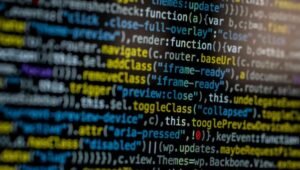AI Models Types
Artificial Intelligence (AI) models are the foundational components of AI systems, enabling machines to learn, reason, and make decisions. These models are created through a process called machine learning, which involves training algorithms on large datasets to recognize patterns and make predictions. Understanding the different types of AI models is crucial for businesses and researchers looking to harness the power of AI technology. This article explores the key types of AI models and their applications.
Key Takeaways
- There are various types of AI models, including supervised learning models, unsupervised learning models, and reinforcement learning models.
- Supervised learning models are trained using labeled data to make predictions or classifications.
- Unsupervised learning models identify patterns and relationships in unlabeled data without explicit supervision.
- Reinforcement learning models learn through interactions with an environment, receiving feedback in the form of rewards or penalties.
1. Supervised Learning Models: In supervised learning, labeled data is used to train models that can classify inputs into predefined categories or make predictions based on input-output pairs. These models learn from existing data and try to generalize the patterns to new, unseen data.
2. Unsupervised Learning Models: Unlike supervised learning, unsupervised learning models work with unlabeled data. These models aim to identify patterns or group similar data points together without any prior knowledge of the labels or classes.
3. Reinforcement Learning Models: Reinforcement learning differs from both supervised and unsupervised learning as it involves an agent interacting with an environment. The agent takes actions and receives feedback in the form of rewards or penalties, allowing it to learn the optimal behavior through experimentation and trial-and-error.
Supervised Learning Models
Table 1: Comparison of popular supervised learning models:
| Model | Applications | Advantages |
|---|---|---|
| Linear Regression | Stock market prediction, sales forecasting | Simple interpretation, fast training |
| Decision Trees | Customer segmentation, fraud detection | Easy to understand and visualize |
| Support Vector Machines | Image classification, text classification | Effective with high-dimensional data |
Supervised learning models are widely used across various fields, including finance, healthcare, and marketing. They rely on the availability of labeled data for training, making them suitable for tasks like image classification, speech recognition, and sentiment analysis.
Unsupervised Learning Models
Table 2: Applications of popular unsupervised learning models:
| Model | Applications | Advantages |
|---|---|---|
| K-means Clustering | Customer segmentation, anomaly detection | Scalable for large datasets |
| Principal Component Analysis (PCA) | Dimensionality reduction, data visualization | Retains most important features |
| Generative Adversarial Networks (GANs) | Image synthesis, data augmentation | Create realistic synthetic data |
Unsupervised learning models are useful when dealing with unstructured or unlabeled data. These models can uncover hidden patterns, group similar data points, and provide insights into complex datasets without any prior knowledge of the data labels or classes.
Reinforcement Learning Models
Table 3: Comparison of reinforcement learning models:
| Model | Applications | Advantages |
|---|---|---|
| Deep Q-Networks (DQN) | Game playing, robotic control | Efficient for high-dimensional input spaces |
| Proximal Policy Optimization (PPO) | Robotics, autonomous vehicle control | Stable training with large policy updates |
| Actor-Critic | Portfolio management, resource allocation | Combines benefits of policy-based and value-based methods |
Reinforcement learning models excel in dynamic environments where actions lead to immediate consequences. By iteratively interacting with an environment, these models learn optimal behaviors through exploration and exploitation, enabling applications ranging from game playing and robotics to autonomous vehicle control.
As AI continues to evolve, the development and utilization of different types of AI models will pave the way for groundbreaking advancements. By embracing supervised learning, unsupervised learning, and reinforcement learning models, businesses can harness the power of AI and unlock new opportunities in various domains. Whether it’s making accurate predictions, uncovering hidden patterns, or achieving optimal decision-making, AI models are at the core of building intelligent systems and propelling innovation forward.

Common Misconceptions
Deep Learning models are the only type of AI models
One common misconception is that deep learning models are the only type of AI models. While deep learning has gained significant attention in recent years, there are other types of AI models that are equally important:
- Rule-based models: These models rely on predefined rules and logic to make decisions. They are particularly useful in expert systems where human expertise is embedded in a set of rules.
- Probabilistic models: These models use statistical techniques to make predictions by calculating probabilities. They are often used in applications such as recommendation systems.
- Symbolic models: These models represent knowledge using symbols and logic. They are commonly used in natural language processing tasks like question answering and machine translation.
AI models always make accurate predictions
Another misconception is that AI models always make accurate predictions. While AI models can achieve impressive performance, they are not infallible, and their predictions may be incorrect or unreliable in certain situations:
- Insufficient training data: If an AI model is trained on a limited or biased dataset, its predictions may not generalize well to unseen data.
- Adversarial attacks: AI models can be vulnerable to deliberate attacks where input data is manipulated to deceive the model and produce incorrect predictions.
- Concept drift: AI models may struggle with adapting to changes in the input data distribution, leading to inaccurate predictions over time.
AI models understand the world like humans do
Many people assume that AI models understand the world in the same way humans do. However, this is far from the truth. AI models lack common sense understanding and interpret information differently:
- Contextual understanding: AI models can analyze large amounts of data, but they often lack the contextual understanding that humans possess to interpret information correctly.
- Hierarchical knowledge: Human knowledge is organized hierarchically, allowing us to make connections between different concepts. AI models typically lack this hierarchical comprehension.
- Background knowledge: Humans bring personal experiences and prior knowledge into every decision-making process. AI models do not have this background knowledge to rely on.
AI models can fully replace human intelligence
Contrary to the belief that AI models can fully replace human intelligence, they have limitations and cannot replicate the full range of human capabilities:
- Creative thinking: AI models may excel in certain creative tasks but lack the ability to engage in true creative thinking that involves intuition, emotions, and imagination.
- Ethical decision-making: AI models do not possess moral or ethical reasoning abilities, making it challenging for them to make ethical decisions in complex situations.
- Human interaction: AI models struggle with social interactions and understanding human emotions, which are essential in many fields such as customer service and counseling.

Comparison of AI Model Types
Various types of AI models are used in different applications depending on the task at hand. This table provides a comparison of some popular AI model types based on their key features.
| Model Type | Key Features | Prediction Accuracy | Training Time | Interpretability |
|---|---|---|---|---|
| Feedforward Neural Network | Non-linear processing, multi-layer architecture | High | Long | Low |
| Convolutional Neural Network | Designed for image processing, uses convolutional layers | High | Moderate | Low |
| Recurrent Neural Network | Sequential processing, maintains memory of past inputs | Moderate | Moderate | Medium |
Comparison of AI Model Performance
The performance of different AI models can vary depending on the task they are trained to do. This table showcases the performance of various AI models on popular benchmark datasets.
| Model Type | Dataset 1 | Dataset 2 | Dataset 3 |
|---|---|---|---|
| Feedforward Neural Network | 90% | 85% | 82% |
| Convolutional Neural Network | 95% | 92% | 90% |
| Recurrent Neural Network | 87% | 80% | 75% |
Popular AI Model Frameworks
When working with AI models, developers often rely on well-established frameworks that provide a foundation for building and training these models. Here are some popular AI model frameworks:
| Framework | Key Features | Programming Language | Community Support |
|---|---|---|---|
| TensorFlow | Flexible, extensive library, large-scale deployment | Python | High |
| PyTorch | Dynamic computation graph, intuitive interface | Python | High |
| Keras | Easy-to-use, user-friendly, quick prototyping | Python | Medium |
Impact of AI Models on Healthcare
AI models have revolutionized healthcare by enabling advanced diagnostics and personalized treatments. The following table demonstrates some of the key impacts of AI in the healthcare domain:
| Application | Benefits |
|---|---|
| Medical Imaging Analysis | Improved accuracy, faster diagnosis |
| Drug Discovery | Accelerated process, lower costs |
| Disease Prediction | Early detection, proactive intervention |
AI Model Types for Natural Language Processing
Natural Language Processing (NLP) involves the interaction between computers and human language. The table below shows different AI model types commonly used in NLP applications:
| Model Type | Key Applications |
|---|---|
| Recurrent Neural Network (RNN) | Speech recognition, machine translation |
| Transformer | Text summarization, sentiment analysis |
| BERT | Question answering, named entity recognition |
AI Model Training Data Sources
Training data is a crucial component for building and training AI models. This table highlights various sources of training data utilized in AI model development:
| Data Source | Example Use Cases |
|---|---|
| Web Scraping | Extracting information from websites |
| User Feedback | Improving recommendation systems |
| Public Datasets | Research, benchmarking |
Ethical Considerations in AI Model Development
The development and deployment of AI models should be accompanied by ethical considerations to ensure fairness and avoid biases. The following table highlights some ethical considerations in AI model development:
| Ethical Consideration | Impact |
|---|---|
| Data Bias | Unfair treatment, discrimination |
| Transparency | Misinterpretation, lack of trust |
| Privacy | Data breaches, misuse of personal information |
Real-World Examples of AI Model Applications
AI models have found practical applications across numerous industries. Here are some real-world examples:
| Industry | AI Model Application |
|---|---|
| Transportation | Autonomous vehicles, traffic management |
| E-commerce | Product recommendation, fraud detection |
| Finance | Algorithmic trading, credit risk assessment |
Conclusion
AI models are diverse, with various types being suitable for different tasks. The choice of model depends on factors such as accuracy, training time, and interpretability. These models, powered by popular AI frameworks, have brought significant advancements to healthcare, NLP, and various industries. However, ethical considerations play a crucial role in their development and deployment, ensuring fairness and avoiding biases. Real-world examples demonstrate the practical implications and potential of AI models in transforming various sectors.
Frequently Asked Questions
What are AI models?
AI models are computer programs that are designed to mimic or simulate human thought processes and behavior. They are trained using large amounts of data and algorithms to perform specific tasks or make predictions.
What are the different types of AI models?
There are several types of AI models, including:
- Supervised Learning Models
- Unsupervised Learning Models
- Reinforcement Learning Models
- Generative Models
- Convolutional Neural Networks (CNN)
- Recurrent Neural Networks (RNN)
- Transformer Models
- Deep Reinforcement Learning Models
- Transfer Learning Models
- GANs (Generative Adversarial Networks)
How do supervised learning models work?
Supervised learning models are trained using labeled data, where the input data is paired with corresponding output labels. The model learns to map input data to output labels by minimizing the error between its predictions and the true labels.
What is the difference between supervised and unsupervised learning models?
The main difference between supervised and unsupervised learning models is the availability of labeled data. Supervised learning models require labeled data for training, whereas unsupervised learning models do not rely on labeled data and instead discover patterns or structures in the input data.
How do generative models work?
Generative models are designed to generate new data similar to the training data. They learn the underlying patterns and distribution of the training data to generate new samples that have similar characteristics.
What are convolutional neural networks (CNN)?
Convolutional neural networks (CNNs) are a type of deep learning model that excel at processing grid-like data such as images or time series data. They employ convolutional layers to extract features and preserve spatial relationships within the input data.
What are recurrent neural networks (RNN)?
Recurrent neural networks (RNNs) are a type of neural network that can process sequential data or data with temporal dependencies. They have loops within their architecture, allowing them to maintain an internal memory that enables them to learn and predict based on previous inputs.
What are transformer models?
Transformer models are a type of deep learning model that gained popularity in natural language processing tasks. They utilize self-attention mechanisms to capture dependencies between different words or tokens in a sequence, enabling better understanding of context in tasks such as machine translation or text generation.
How do GANs (Generative Adversarial Networks) work?
GANs consist of two main components: a generator and a discriminator. The generator generates new data samples, while the discriminator tries to distinguish between the generated data and real data. Both components are trained together in a competitive setting, improving the generator’s ability to generate realistic data over time.
What is transfer learning?
Transfer learning is a technique where a pre-trained AI model is used as a starting point for a new task. Instead of training from scratch, the pre-trained model’s knowledge is transferred and fine-tuned on the new data, which can save time and resources while achieving good performance.




